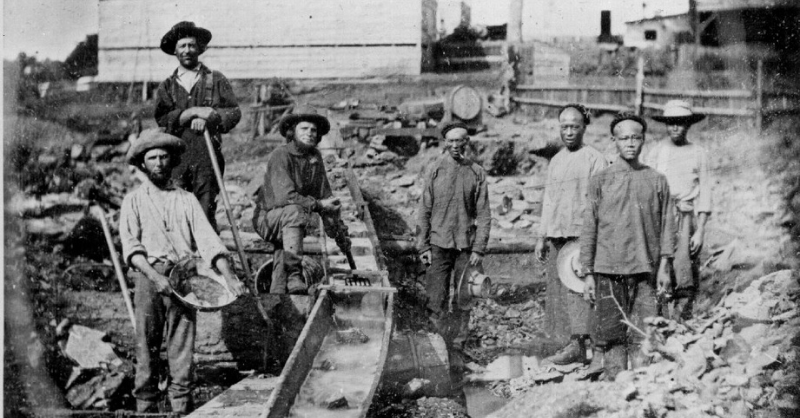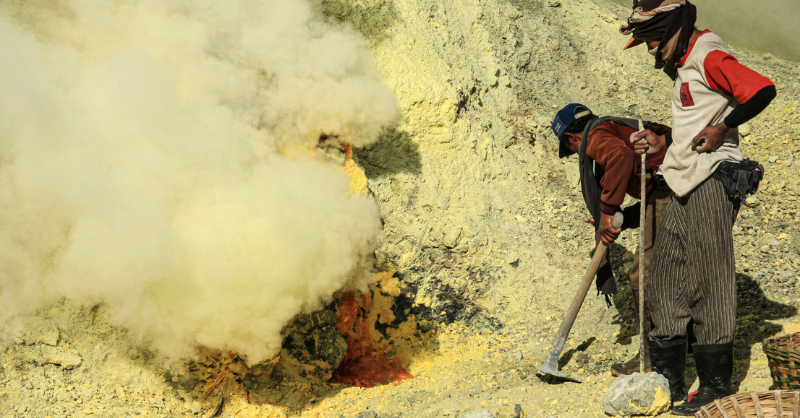
Artisanal Mining – Opportunity for Mercury Elimination
It's hard to believe that the use of mercury in artisanal mining is still so prevalent 200 years after its extensive use in California. Until you start to think about the practicalities. The alternatives are often limited.
There are an estimated 15-20 million artisanal gold miners (ASGM) worldwide today, mostly operating informally and using mercury, often without proper personal protective equipment. There are solutions, but in most cases they need to follow formalisation.
This is a What Caught Our Eye story - highlighting reports, research and commentary at the interface of finance and sustainability. Things we think you should be reading, and pointing out the less obvious implications. All from a finance perspective.
It's free to become a member ... just click on the link at the bottom of this blog or the subscribe button. Members get a summary of our weekly posts, including What Caught Our Eye and Sunday Brunch, delivered straight to your inbox. Never miss another blog post !
Artisanal Mining – Opportunity for Mercury Elimination
Miners used 26 million pounds of mercury during the California gold rush. Almost 200 years later, the San Francisco Bay area has some of the highest concentrations of mercury contamination on earth. Harm is multi-generational.
Mercury has long been core to artisanal gold mining, a source of long-term adverse health and environmental impacts. There are an estimated 15-20 million artisanal gold miners (ASGM) worldwide today, mostly operating informally and using mercury, often without proper personal protective equipment. These miners, spread across over 80 countries, are poisoning themselves as mercury seeps into their systems.
Mercury is a neurotoxin, impacting the nervous system and brain, leading to a variety of conditions, sometimes resulting in death.
Along with the people who mine, mercury contaminates water, soil, local animals and members of nearby communities who drink mercury contaminated water and eat contaminated food. Circles of impact are wide given connections between ecology and communities, resulting in long lasting health impacts.
San Francisco Bay speaks for itself, with meaningful toxic concentrations gradually lowering but still in play many generations after prospectors stopped operating in the area.
The Minamata Convention was held in 2013, with 128 signatory countries having since agreed to eliminate mercury usage over the course of time. Despite the agreement, progress has been very limited, with the metal still being used across the clear majority of the artisanal gold mining sector.
ASM is responsible for an estimated 37% of worldwide mercury emissions. Statistics are lacking on a global basis on the health impacts to artisanal miners, but a study in Cameroon found 72% of gold miners contaminated by mercury.
Although uncertain, it is reasonable to assume that this level of contamination can be extrapolated across the global ASGM community that operates in over 80 countries. Along with miners, statistics are unavailable on how many community members are contaminated and what cross-generational figures look like, but the numbers are clearly vast.
Transitioning from mercury toward benign alternatives involves capacity development that takes place in the context of broader formalization.

Education on awareness, practical training, and access to finance to fund shifts to alternatives, and of course productivity gains that sustain the use of alternatives, are all part of the process.
Mitigating harms in this area can occur at different levels:
- Safer use of mercury – ensuring that proper PPE is used, so that direct contact is eliminated
- Safer processes that minimize emissions, reducing direct harm, ecological damage and community contamination; and of course:
- Shifts toward better alternatives, so that mercury is avoided altogether.
What is possible depends on specific situations. Option #3 is the best long-term approach of course, but the other two options still improve outcomes compared to the manual handling of mercury that happens far too often today.
Organizations like the Alliance for Responsible Mining (ARM), Levin Sources, and the Artisanal Gold Council have successfully reduced or eliminated harm from the use mercury across numerous projects.
Estelle Levin, founder of Levin Sources, and a recognized global expert on artisanal mining, defines formalization as ‘the transition toward organized and professionalized systems of production in and through which responsible business conduct and sustainable development are more feasible and desirable, and thus more likely.’
Implicit in Estelle’s definition is building trust that facilitates discussions about solutions with miners, increased resilience that reduces safety and other vulnerabilities that miners face, and a broad transition toward stable predictable business relationships where responsible practices are a norm.
Examples of success, where harm from mercury usage was reduced in the context of broader formalization include:
#A transition of a Fairmined certified organization in Peru toward alternatives that eliminated mercury
#The implementation of a mercury free processing plant in Colombia that was administered by women miners
#Implementing technological changes in three mines sites in Burkina Faso that reduced harm from mercury in the context of broader formalization and the implementation of effective governance
These examples, all involving the Alliance for Responsible Mining, highlight a key success factor – the development of trust that allowed miners to enhance their capacity as governance and good practices were implemented.
Mercury elimination was one part of a broader context in other words.
Multiple technologies are available that can reduce harm from mercury usage in mining.
A notable example is the ‘Mercury Capture Systems for ASGM Gold Shops’ that Mercer University developed (and for which they won a top prize in the Artisanal Mining Grand Challenge).
This technology has now been rolled out to miners in multiple countries, including Mozambique, Ecuador, Peru and Guyana. A key to successful technology deployment is that it needs to be cost effective, recognizing that artisanal gold miners do not have access to significant capital.
Employment safety is something that everybody who works wants. Artisanal mining has a pattern of accidents, but along with specific accidents, the undercurrent of health impacts of mercury is significant.
These health impacts, along with impacting miners, have broad community affects given circles of contamination. The good news is that the harm from mercury can be reduced and eliminated over time as formalization takes hold.
At The Blended Capital Group, we understand that harm from mercury needs to be mitigated, and that approaches that deliver broader social and productivity gains in commercially realistic ways through formalization will be crucial for success in the course of time.
Thinking about the opportunity from a mining or impact investor perspective, productivity gains through formalization add value, a broad portfolio of projects reduces country-specific risks, and extreme social gains are delivered including improved safety, dignity of work and development in communities that neighbour mining.


Please read: important legal stuff.


